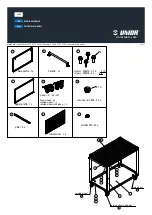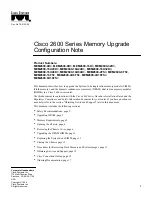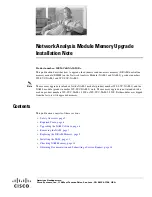
•
I/O may hang when a Device Mapper device is deleted before the volume is unmounted.
•
If the
scsi_dh_rdac
module is not included in
initrd
, slower device discovery may be seen and the
syslog may become populated with buffer I/O error messages.
•
I/O may hang if the host server or storage array is rebooted while I/O is active. All I/O to the storage array should
be stopped before shutting down or rebooting the host server or storage array.
•
With an MD Series torage array, after a failed path is restored, failback does not occur automatically because
the driver cannot auto-detect devices without a forced rescan. Run the command
rescan_dm_devs
to force
a rescan of the host server. This restores the failed paths enabling failback to occur.
•
Failback can be slow when the host system is experiencing heavy I/O. The problem is exacerbated if the host
server is also experiencing very high processor utilization.
•
The Device Mapper Multipath service can be slow when the host system is experiencing heavy I/O. The problem
is exacerbated if the host server is also experiencing very high processor utilization.
•
If the root disk is not blacklisted in the multipath.conf file, a multipathing node may be created for the root disk.
The command
multipath –ll
lists vendor/product ID, which can help identify this issue.
•
If upgrading from a previous version of SLES, uninstall and then reinstall the latest
scsi_dh_rdac
module on
the updated SLES installation. Then update the kernel and install the MD Storage Manager from the DVD.
Troubleshooting
Question
Answer
How can I check if multipathd is running?
Run the following command.
/etc/init.d/multipathd status
Why does the multipath –ll command
output not show any devices?
First verify if the devices are discovered or not. The command
#cat /
proc/scsi/scsi
displays all the devices that are already discovered.
Then verify the multipath.conf to ensure that it is been updated with
proper settings. After this, run
multipath
. Then run
multipath –
ll
, the new devices must show up.
Why is a newly-mapped LUN not assigned
a multipathing device node?
Run
rescan_dm_devs
in any directory. This should bring up the
devices.
I removed a LUN. But the multipathing
mapping is still available.
The multipathing device is still available after you remove the LUNs. Run
multipath –f <device node for the deleted LUN>
to
remove the multipathing mapping. For example, if a device related
with /dev/dm-1 is deleted, you must run
multipath –f /dev/dm-1
to remove /dev/dm-1 from DM mapping table. If multipathing daemon is
stopped/restarted, run
multipath –F
to flush out all stale mappings.
Failback does not happen as expected
with the array.
Sometimes the low level driver cannot auto-detect devices coming back
with the array. Run
rescan_dm_devs
to rescan host server SCSI bus
and re-aggregate devices at multipathing layer.
180
Summary of Contents for PowerVault MD Series
Page 1: ...Dell PowerVault MD Series Storage Arrays Administrator s Guide ...
Page 14: ...21 Getting Help 237 Contacting Dell 237 ...
Page 46: ...46 ...
Page 62: ...62 ...
Page 96: ...96 ...
Page 108: ...108 ...
Page 114: ...114 ...
Page 152: ...152 ...
Page 164: ...164 ...
Page 174: ...3 Select Copy Remove Copy Pairs The Remove Copy Pairs dialog is displayed 4 Click Yes 174 ...
Page 184: ...184 ...
Page 212: ...212 ...
Page 220: ...220 ...
















































